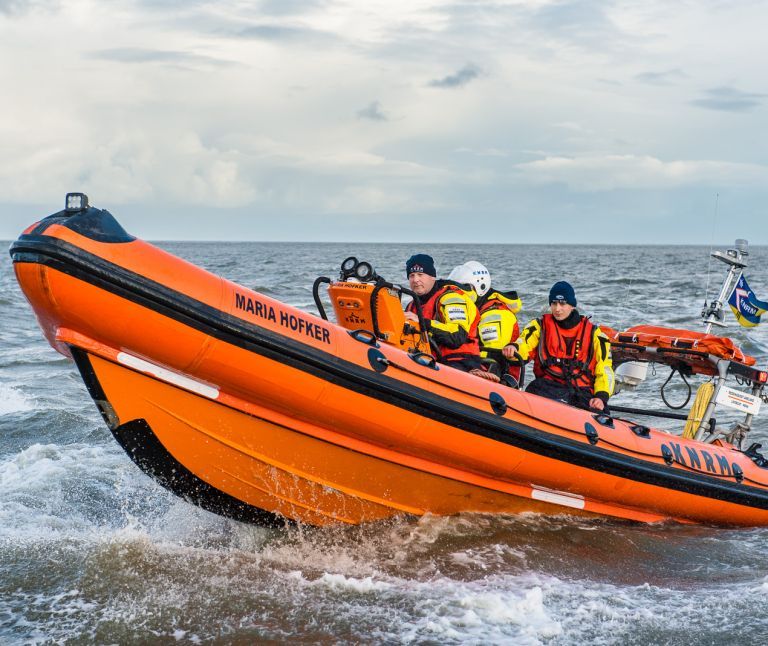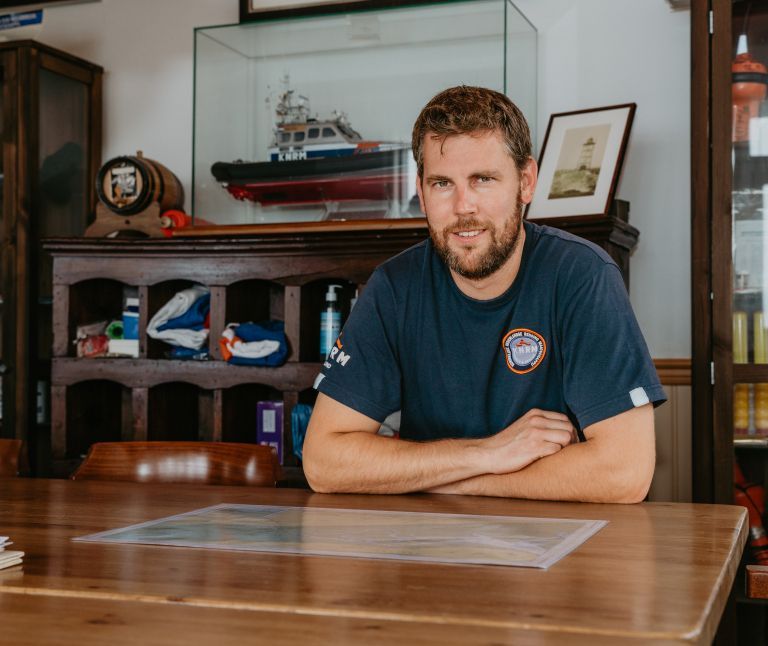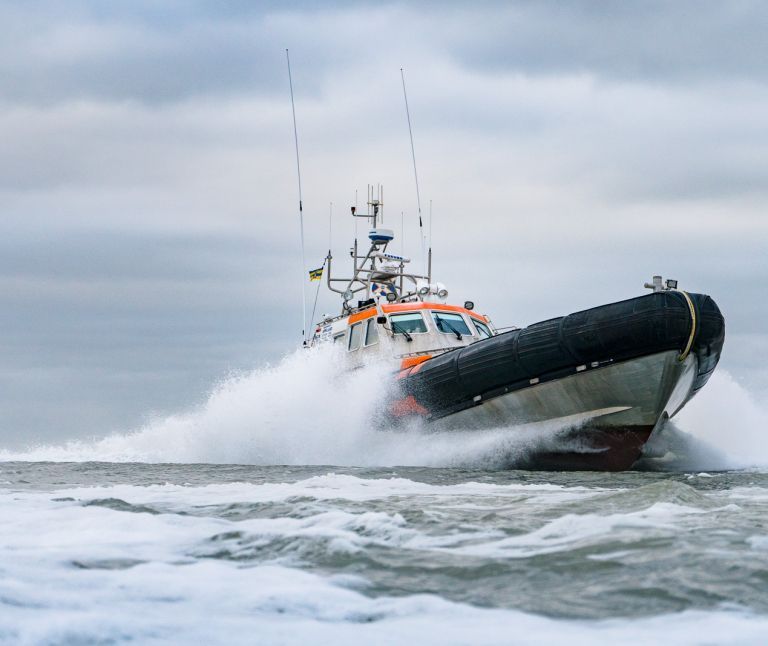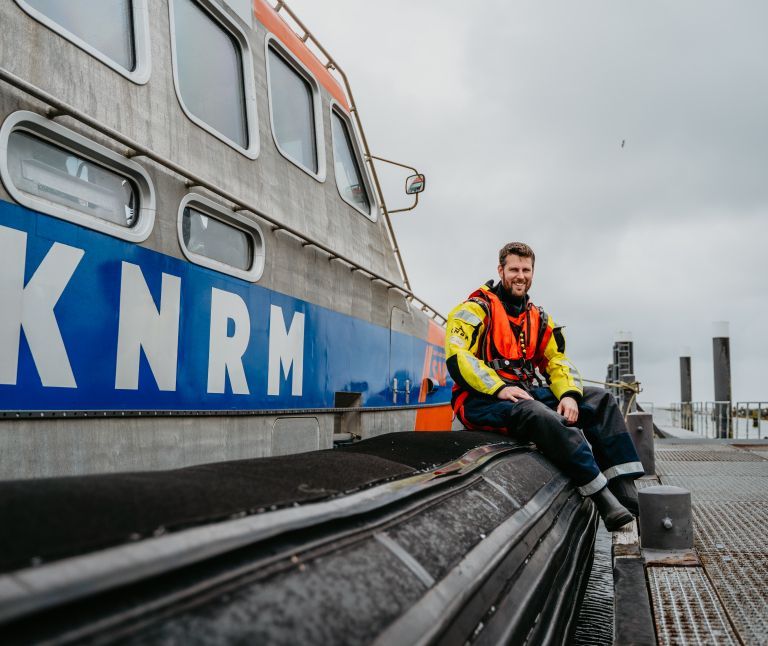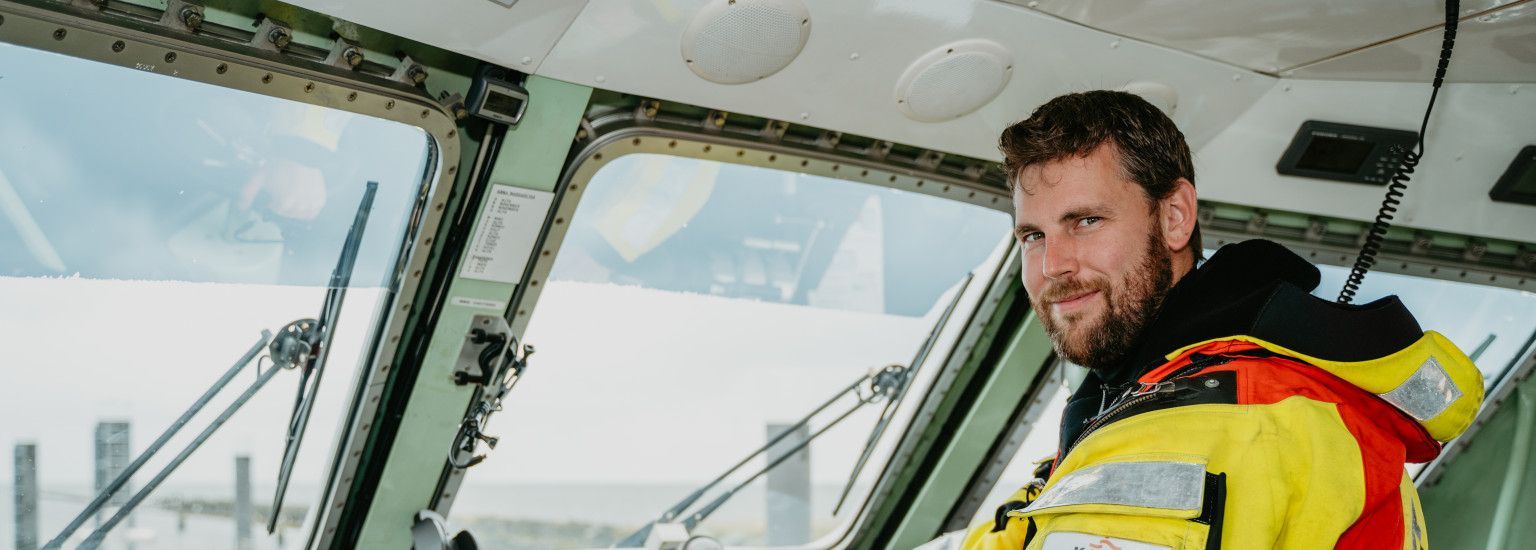
KNRM professional skipper Willard
Willard (33) is one of KNRM's eight professional skippers in the Netherlands. Together with all the volunteers - one deputy skipper and 12 boarders - he rescues people and animals in distress at sea or on the mud flats.
365 days a year, 24 hours a day and in all weather conditions, they are ready when called. Willard: ‘When alerted, we leave within 10 minutes, because on the water a small problem can quickly become a big problem.’
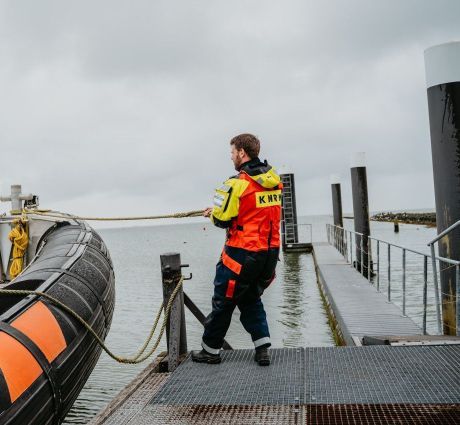
-
Responsible
At the KNRM rescue station Ameland-Ballum, the Anna Margaretha - the largest of the island's two lifeboats - is always in the water, ready to go. Thanks in part to Willard, because maintenance of the boat (together with his team) is part of his duties. He is also responsible for training the crew and preparing and supervising the weekly drill on Monday evening. ‘Added to this are tasks such as answering e-mails, attending meetings, preparing a rescue report after each action and collaborating on the development of a new type of lifeboat.’
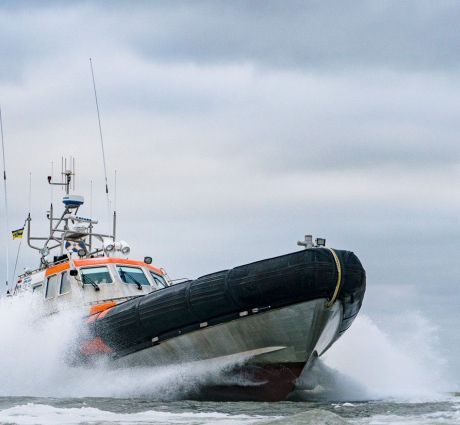
-
Infected with the KNRM virus
In 2019, Willard joined KNRM to replace the previous retiring professional skipper. Before that, he worked as a mate on dredgers around the world: ‘At that time, I was always away from home for periods of six weeks to work in South Korea, Taiwan and Indonesia, among others. Because I had become a father, I didn't want to do that anymore.’ His first rescues, Willard worked with the previous skipper or deputy skipper. Through their stories of experience and the proud feeling after his first action alone with the crew, in which they managed to rescue two men from the waves at Bornrif just in time, he was immediately ‘infected with the virus.’
Sad situations
Besides that action at Bornrif, the search for the German girl missing in the sea in 2020 is also in Willard's memory. ‘We searched for her for a week, together with neighbouring stations and an impressive volunteer fishing fleet. In the end, the rescue boat from Schiermonnikoog pulled the girl out of the water and we brought her back to Ameland.’ I am not easily emotional, but such a sad situation impresses everyone. Within the team, we discuss this and we keep a close eye on each other. As a skipper, I check how the crew members are doing, because if they are struggling with something, I want to know.’
Ready for departure within 10 minutes
Cooperation with other stations is not exceptional: KNRM pulls out all the stops during a major action. Neighbouring islands or other stations at home and abroad can come to help and, if necessary, a plane or helicopter is deployed. But fortunately the rescue stations in Ballum and Nes almost always manage to complete a rescue operation independently. Acting quickly is crucial here: ‘When we are paged by the coastguard, everyone must act immediately so that we can leave within ten minutes. In that time, we have to get to the station, put on our suits, start up the boat and leave.’ Meanwhile, Willard also calls the Coast Guard for information. They tell him what the situation and exact location is. How serious the situation is is always difficult to assess, according to Willard: ‘The other day, someone sounded very calm, while on a sinking ship he was definitely in danger.’
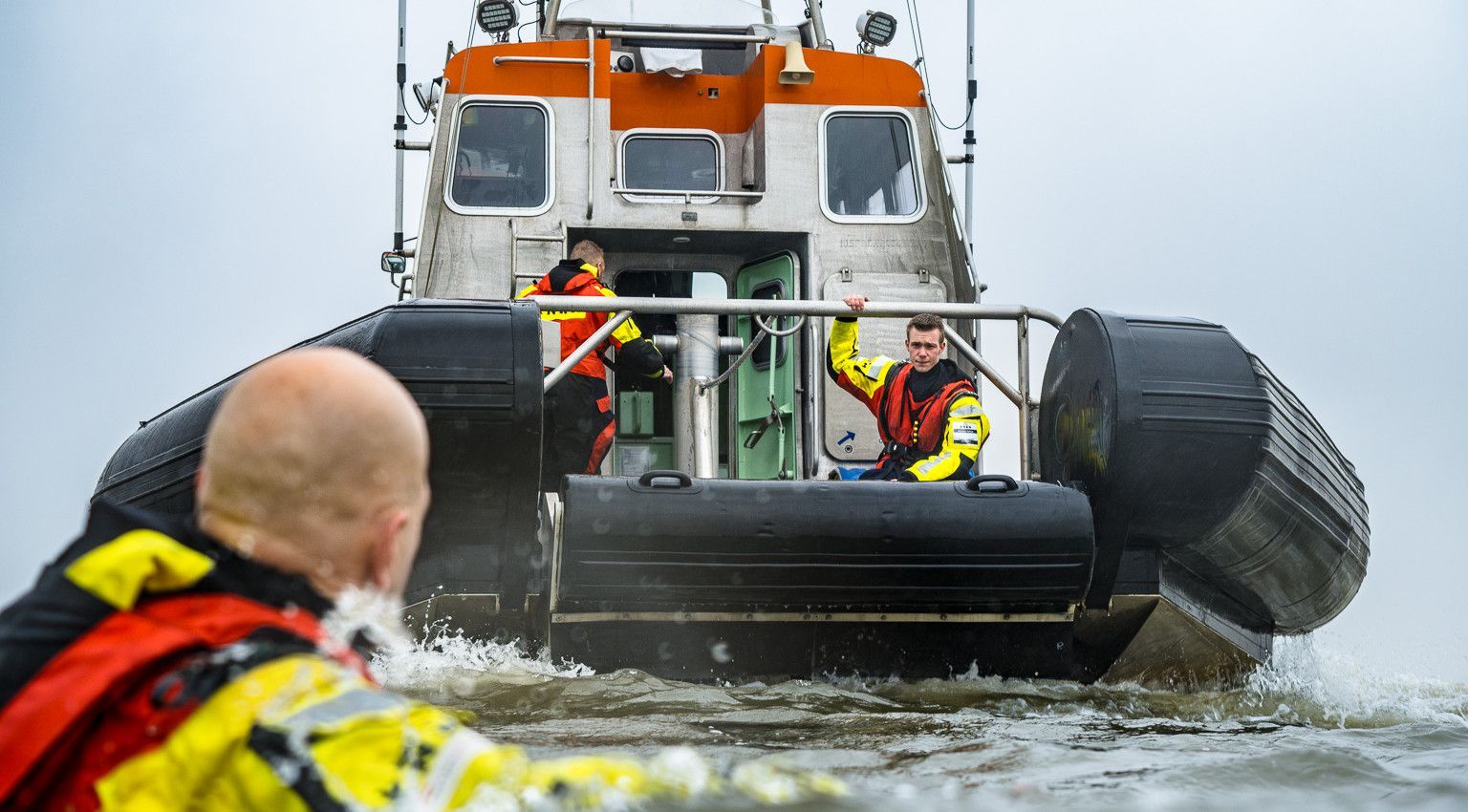
Problems at sea and the Wadden
People get into trouble at sea for various reasons: ‘Due to equipment failure, navigational error or being caught out by bad weather, which means they have to deal with strong winds and high waves.’ Tides also sometimes cause problems: ‘At high tide, you can't see where you can sail. As a result, people sometimes get stuck and a rudder can even break off.’ Besides all coastguard notifications, KNRM has another important task on Ameland: patient transport to the shore-based hospital. ‘For this we actually have the Wadden helicopter, but it cannot always take to the air. Sometimes the weather is too bad or the helicopter is on another island. Then we take the patient across by lifeboat.’
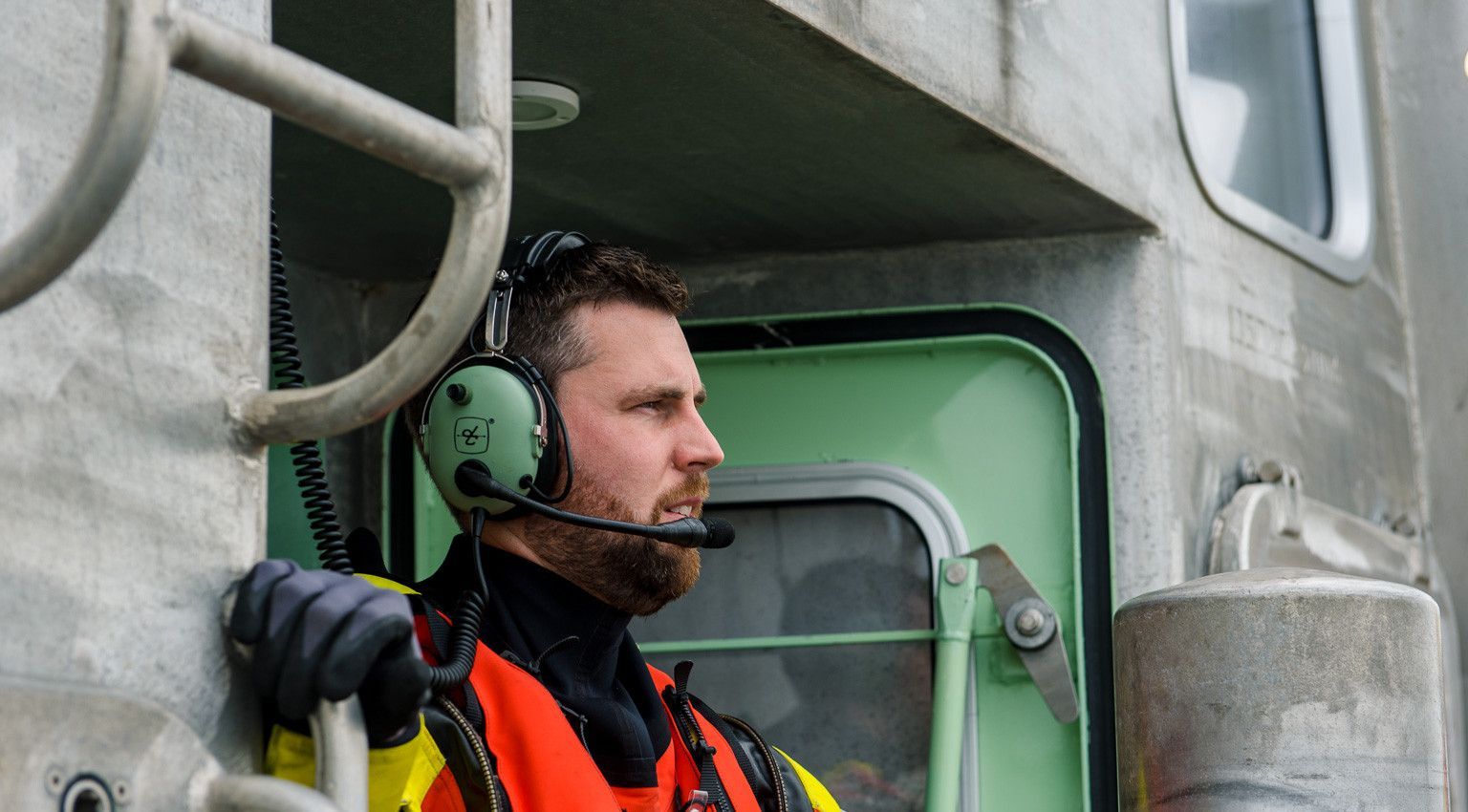
Putting your life on the line
Because KNRM is involved in all kinds of different rescue operations as well as patient transport, Willard is able to help an awful lot of people. ‘We do it for everyone who visits, but of course also for our own people. Everyone on the island knows someone who has once been on the lifeboat. That is why there is a lot of appreciation for what we do.’ But according to Willard, the volunteers deserve even more appreciation than himself: ‘We put our lives on the line for another person, but for me that is my job and therefore risk of the trade. The rest of my team does it voluntarily, alongside their regular jobs. Does something happen in the evening or at night? Then they just have to go back to work the next day. And that while we never know how long a rescue is going to take and whether you can sleep at all.’
Three tips from Willard
An accident is in a small corner, but with proper preparation you can prevent an emergency and maybe even save your own life. Willard offers the following tips to do so:
Tip 1
Check the weather forecast
Check the weather not only at your current location, but also of your destination and the places you pass along the way. Even in a small country like the Netherlands, weather differences can be big. Include weather forecasts later in the day.
Tip 2
Make sure your map or navigation programme is up to date
A paper water chart is actually out of date by the time it is printed. This does not automatically mean that a digital map will always be up-to-date. It very much depends on how often the supplier provides updates. Remember: as a skipper, you are always responsible for using good charts and thus updating them.
Tip 3
Wear a life jacket
With a properly functioning life jacket on, many drowning victims would still have lived. In cold water, you are four times more likely to survive with a life jacket on. Do not overestimate yourself: even the best swimmers can drown due to cold shock or overtiredness.
About the KNRM on Ameland
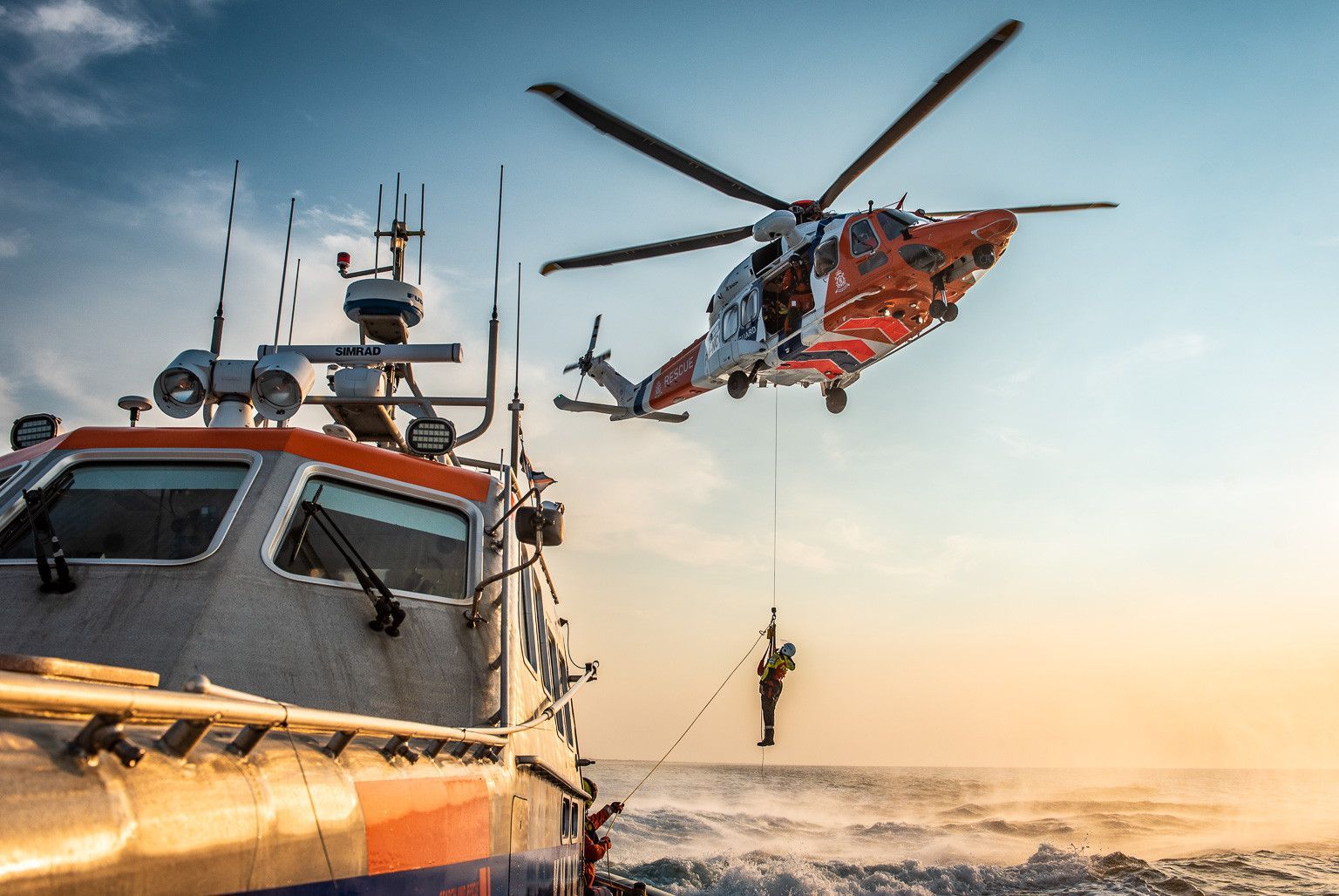
Rescuing and preventing casualties at sea and the spacious inland water, that is the core task of KNRM.
Sailor in distress? Surfer missing? Sailing yacht with a broken mast due to strong winds? KNRM's rescuers and lifeboats are on standby 24 hours a day to rescue people in all types of weather. But also on the beach and in the dunes, KNRM's coastal vehicles help in hard-to-reach places.
KNRM rescuers are also active on Ameland.
